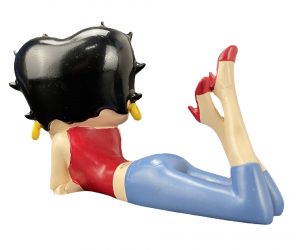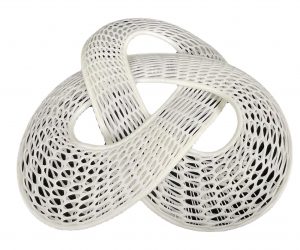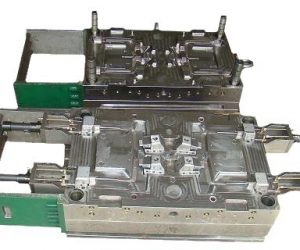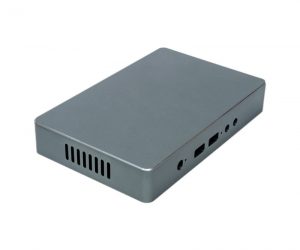When designing the cooling water system for a plastic mold, it's paramount to ensure that it facilitates efficient and effective cooling during the intricate injection molding process. This design process necessitates the fulfillment of several pivotal conditions, each crucial in attaining optimal cooling, thereby enhancing the overall productivity and quality standards of the molded components. Let's delve into the key considerations that must be met in crafting a cooling water design for plastic molds:
- Uniform Temperature Distribution: The design should strive for a uniform distribution of cooling water throughout the mold cavity, ensuring that no hot spots form, which could lead to uneven cooling and subsequent warping or distortion of the molded part.
- Adequate Heat Transfer: The cooling channels must be strategically positioned and sized to maximize heat transfer from the plastic to the coolant. This requires a meticulous balance between flow rate and coolant temperature to efficiently dissipate heat and maintain a stable molding environment.
- Minimal Pressure Drop: The design should minimize pressure drops within the cooling system, ensuring smooth coolant flow without compromising the efficiency of the cooling process. This helps maintain consistent cooling rates and reduces energy consumption.
- Material Compatibility: The cooling water system's materials must be compatible with both the coolant and the plastic being molded. This includes choosing corrosion-resistant materials that won't leach contaminants into the mold or coolant, thereby preserving the integrity of the molded product.
- Ease of Maintenance: The design should incorporate features that facilitate easy access and maintenance of the cooling system. This includes removable components, clearance for cleaning tools, and design elements that minimize the risk of leaks or clogs.
- Scalability and Flexibility: The cooling water design should be scalable to accommodate different mold sizes and configurations, as well as flexible enough to adapt to changes in production demands or product specifications.
- Compliance with Standards: The design must adhere to industry standards and regulations related to safety, environmental impact, and quality assurance. This ensures that the cooling system operates reliably and meets the highest standards of professionalism and academic rigor.
By addressing these key conditions, the cooling water design of a plastic mold can be optimized to enhance the efficiency, productivity, and quality of the injection molding process, resulting in molded parts that meet or exceed customer expectations.
By meeting these conditions, the cooling water design of plastic molds can ensure effective cooling, improve production efficiency, shorten cycle times, and improve the quality of molded parts. To ensure optimal performance of the cooling system throughout the mold life cycle, regular monitoring and maintenance are critical.
First, effective cooling water design ensures that the mold maintains the proper temperature during production. Excessive temperature can cause mold deformation, cracking or even damage, thus affecting the quality and dimensional accuracy of molded parts. Through reasonable water flow distribution and flow rate control, the cooling water can quickly take away the heat and keep the mold within a suitable working temperature range.
Secondly, optimized cooling water design can improve production efficiency. When the mold temperature is too high, it takes longer to cool, thereby extending the production cycle. Effective cooling water design can reduce cooling time, speed up production, and improve production efficiency. In addition, the rapid heat dissipation of cooling water can also reduce the thermal stress of the mold and extend the service life of the mold.
Additionally, regular monitoring and maintenance of your cooling system is essential to ensure its optimal performance. Problems such as scale, impurities and corrosion in the cooling system will affect the smoothness of the water flow and the heat dissipation effect. Therefore, regular cleaning and replacement of cooling water is necessary. At the same time, checking and repairing leaks, blockages and other problems are also important aspects of maintenance work. Only by maintaining the normal operation of the cooling system can efficient cooling and stable production of the mold be ensured.
In short, by meeting the prerequisites of cooling water design, plastic molds can achieve effective cooling effects, improve production efficiency, shorten cycle times, and improve the quality of molded parts. However, to ensure optimal performance of your cooling system, regular monitoring and maintenance are essential. Only by maintaining the normal operation of the cooling system can the stable production of molds and the production of high-quality molded parts be ensured.
Injection molding is an intricate process that involves several critical components, including the cooling system. The cooling water design of plastic molds plays a crucial role in the plastic injection molding process. Proper cooling system design is vital to facilitate efficient and effective mold cooling, which leads to high-quality products and increased productivity.
When Cooling a Mold Which Method of Cooling is Best?
The most effective method of cooling a mold is through a uniform and consistent cooling system. One such system is the water cooling system, which involves the passage of cooling water through channels of the mold. Water cooling is the most efficient, cost-effective, and versatile method of cooling a mold.
What are the Cooling Requirements for Injection Molding Machines?
Injection molding machines require water with a constant flow of between 2 and 5 liters per minute (LPM) for every millimeter of channel depth. Water pressure ranges at between 100 and 500 Kpa for optimal performance. To achieve this, the cooling channel design should match the required flow rate and pressure to ensure adequate cooling capacity.
What are the Challenges in Designing Cooling Channel in Injection Mould?
The cooling channel is a critical part of the cooling system, and its design plays a crucial role in the overall performance of the mold. The challenges involved in designing the cooling channel include maintaining mold stability during operation, uniform cooling of the mold, maintaining proper channel flow and pressure balance, and reducing mechanical stress caused by thermal expansion and contraction.
What is the Cooling Process in Molding?
The cooling process in injection molding involves the passage of cooling water through the channels of the mold. The cooling water absorbs heat from the molten plastic, which exits the mold as a solidified product with the desired shape. The temperature of the cooling water should be maintained at room temperature or lower to facilitate efficient cooling.
What Temperatures and Conditions do Molds Prefer?
Molds prefer lower temperatures, as high temperatures can cause warping, shrinkage and weaken the structural integrity of the mold. The ideal temperature range for molds is between 30°C and 70°C. Optimal mold cooling results when the cooling water temperature is within five degrees of the molded product’s melt temperature.
What are the Proper Cooling Methods?
The proper cooling methods in injection molding involve the use of water cooling systems. There are different types of cooling systems available, including baffle, spiral, and parallel, all designed to facilitate efficient cooling of molds during the injection molding process. Water cooling through channels within the mold itself is the preferred standard cooling method.
Conclusion
The cooling system design is a critical component of injection mold, with water cooling being the most effective, cost-effective, and versatile method. The water cooling system should meet the cooling requirements for injection molding machines to ensure adequate cooling capacity. Designing the cooling channel can be challenging due to several factors such as maintaining mold stability during operation, uniform cooling of molds, and reducing thermal expansion and contraction stresses. Molds prefer lower temperatures; hence the temperature of the cooling water should be maintained at less than room temperature. The proper cooling method involves utilizing water cooling through channels within the mold itself. Accurate control of the cooling water design of plastic molds is necessary, ensuring efficient cooling, high-quality products, and increased productivity in the plastic injection molding process.
The cooling system design is a crucial component of injection mold in which water cooling is the most effective and versatile method. Additionally, the cooling channel design and the flow rate of cooling water play a crucial role in the overall performance of the mold. Molds prefer lower temperatures, which should be achieved by maintaining the temperature of cooling water at less than room temperature. Proper cooling methods include using water cooling through channels within the mold that will ensure efficient cooling, high-quality products, and increased productivity during the plastic injection molding process.




